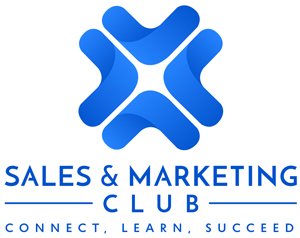“To sell well is to convince someone they need something they never knew they wanted.” – Suzy Kassem
Introduction
In today’s fast-paced world, where competition is fierce and attention spans are fleeting, mastering the art of persuasion has become more crucial than ever. According to a recent study by Harvard Business Review, 63% of customers who feel a sense of connection with a brand are more likely to make a purchase. This statistic underscores the importance of building rapport and trust with potential clients—a cornerstone of effective persuasion.
Understanding the Psychology of Persuasion
Renowned psychologist Robert Cialdini once said, “It’s the small changes that make the big differences.” Indeed, understanding the nuances of human psychology can significantly impact your ability to influence others. Research suggests that up to 95% of purchasing decisions are subconscious, driven by emotions rather than logic. By leveraging principles such as social proof, reciprocity, and scarcity, you can ethically guide prospects toward a buying decision.
Building Rapport and Trust
In a world inundated with sales pitches and advertisements, trust has become the currency of commerce. A study by Edelman found that 81% of consumers need to trust a brand before making a purchase. Therefore, establishing rapport and building trust with your prospects is paramount. Techniques such as active listening, empathy, and authenticity can help foster genuine connections and lay the foundation for a successful sales relationship.
Identifying Needs and Pain Points
Empathy is the cornerstone of effective persuasion. By putting yourself in your prospect’s shoes and understanding their needs and pain points, you can tailor your pitch to resonate with their desires. Research indicates that 68% of customers leave a business due to perceived indifference. Therefore, taking the time to uncover your prospect’s motivations and concerns can significantly increase your chances of closing the sale.
Presenting Solutions, Not Products
In today’s hyper-competitive market, customers are no longer interested in features and specifications—they want solutions to their problems. A study by Gartner found that 64% of customers believe the buying experience is more important than price. Therefore, focus on positioning your product or service as the solution to your prospect’s challenges. Highlight the benefits and outcomes they can expect, rather than inundating them with technical details.
Overcoming Objections
Objections are a natural part of the sales process. However, how you handle them can make or break the deal. Research shows that 75% of customers believe it takes too long to make a purchase online. Therefore, address objections promptly and confidently, providing compelling reasons why your solution is the best choice. By reframing objections as opportunities to add value, you can build credibility and trust with your prospect.
Closing the Deal
Closing the deal is the culmination of all your persuasive efforts. It requires confidence, assertiveness, and the ability to ask for the sale at the right moment. Studies suggest that 44% of salespeople give up after one follow-up, yet 80% of sales require five follow-ups. Therefore, be persistent and proactive in seeking commitment from your prospect. Utilize closing techniques such as trial closes and assumptive language to move the conversation forward and secure the sale.
Continuing the Relationship
The journey doesn’t end once the sale is closed—it’s just the beginning. Research by Bain & Company found that increasing customer retention rates by 5% can increase profits by 25% to 95%. Therefore, invest in nurturing and cultivating long-term relationships with your customers. Provide ongoing support, personalized communication, and value-added services to demonstrate your commitment to their success.
Measuring and Improving
As the saying goes, “What gets measured gets managed.” To continually improve your persuasive abilities, it’s essential to track your performance and solicit feedback from your customers. According to a study by McKinsey & Company, companies that use customer analytics are more likely to outperform their competitors. Therefore, leverage data and insights to identify areas for improvement and refine your approach over time.
Conclusion,
Mastering the art of persuasion is not just about closing sales—it’s about building meaningful connections, fostering trust, and creating value for your customers. By understanding the psychology of persuasion, building rapport and trust, identifying needs and pain points, presenting solutions, overcoming objections, closing the deal, continuing the relationship, and measuring and improving your performance, you can become a master persuader and achieve greater success in your sales efforts.


















